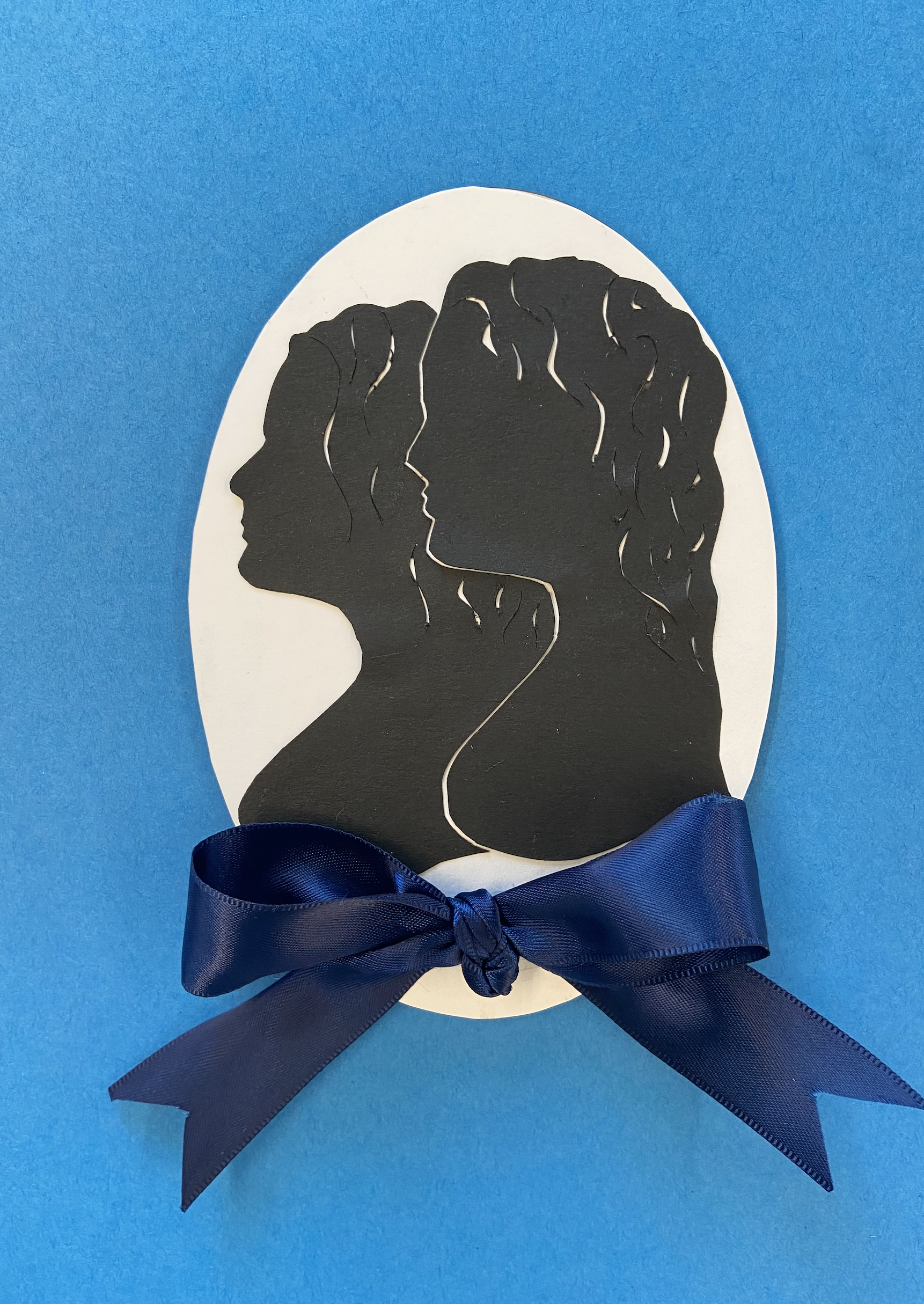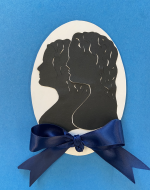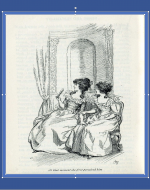Created by Chloe Hanrahan on Thu, 11/09/2023 - 21:47
Description:
Jane Austen has written some of the best love stories of all time with romantic pairings including Darcy and Elizabeth Bennet of Pride and Prejudice (1813) or Emma Woodhouse and Mr. Knightley of Emma (1816), but neither pair supersedes the bond between sisters she crafted in Sense and Sensibility (1811) and Pride and Prejudice. Silhouettes capture the likeness of a person and were often given as a token of love. During the Regency era, a double silhouette, although less common, seems the best way to demonstrate a deep bond between sisters, the focus of this case. Whether examining Pride and Prejudice or Sense and Sensibility, readers can recognize the care and attention Austen devotes to writing the narrative of sisters. This case features a double silhouette of two sisters based on my own sister and me crafted to recall the bonds between Austen's sisterly pairs. Along with my created portrait and composing process are a composite image of silhouettes of Jane Austen and her sister, Cassandra, and a drawing by Hugh Thomson, celebrated Irish illustrator, depicting Elinor and Marianne Dashwood of Sense and Sensibility. As this case shows, sisterhood is an extremely relevant topic from Austen’s time to our time.
Double Silhouette of Erin Maria Walther and Chloe Hanrahan, Crafted by Chloe Hanrahan, 2023. My constructed double silhouette displays two sisters with silhouettes overlapped, showing a close bond between two women. I used the silhouettes of my sister and myself because the sorority Austen writes about is not exclusive to her time. Sisters share a deeply personal and intimate female bond. In Sense and Sensibility (1811) and Pride and Prejudice (1813), Marianne and Elinor and Elizabeth and Jane, respectively, complement one another; rather than complete with each other, Elizabeth offers Jane and Elinor offers Marianne (and vice versa) the strength to continue on her own respective journey. This double silhouette inspired by Austen’s novels displays how sisters better each other when together; separate, each silhouette is whole, but together they make a more interconnected art piece.
Crafting Process of Double Silhouette, Photographed by Chloe Hanrahan, 2023. This is a photo I took towards the end of my crafting process. Pictured here are the scissors, card stock, and tape that I used as well as an early version of my final product. I began my process by drawing out the two overlapping silhouettes, using reference photos of myself and my sister. I then took a picture of this larger drawing and scaled it down using photoshop. I chose the largest wooden oval in the IdeaLab. I used scissors to cut the silhouette out and an Exacto knife to cut out the small curls into the silhouettes. Then I pasted the silhouettes onto a wooden oval, which I already had covered in white card stock. My final addition of the ribbon was a last-minute decision. I chose to add a blue ribbon because I wanted a decoration that did not distract a viewer from the two women, but still enhanced the portrait.
Composite image of Jane Austen's and Cassandra Austen's silhouettes, crafted by Chloe Hanrahan, 2023. The bond between Jane and Cassandra Austen is arguably the inspiration for the dedication we see between sisters uplifting each other throughout many of Jane Austen's novels, in particular her first published novel. Sense and Sensibility reads like a love letter to her sister more than anything else. Pride and Prejudice, her most successful and well-known novel, displays a kind-hearted older sister who is beloved by her headstrong younger sister, a relationship I suspect reflects Austen's own relationship with older sister, Cassandra. After Jane's untimely death, Cassandra deemed her "the sun of her life." Pairing the Austen sisters together, bringing their faces and bodies together through the art of a silhouette, reflects how deep their timeless bond will always be.
Hugh Thomson, “At That Moment She First Perceived Him,” for Sense and Sensibility (1813), by Jane Austen, 1896 edition. Marianne and Elinor's relationship in Sense and Sensibility might best be viewed as Austen's love story to her sister, Cassandra. Austen wrote a beautiful first novel of young women finding love in marriage, but the greater narrative is the sisters' connection with one another. They improve each other simply with their presence. Thomson depicts Marianne and Elinor in historically inaccurate dresses and with frilly long hair; both the sensitive Marianne and sensible Elinor have lofty loose hair and poofy dresses. Nonetheless, Thomson captures the physical closeness of the two sisters. Their hands are literally touching each other's bodies, showcasing their emotional intimacy with one another. Like “sense” and “sensibility,” Marianne and Elinor complement one another much as Jane and Cassandra Austen and my sister, Erin, and I complement each other today.





